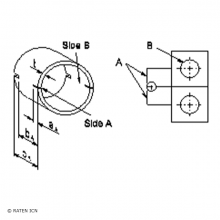News from ETSON and its members*
VUJE participation at Mochovce NPP Unit 3 commissioning.
This highlight presents a successful, in-house developed integration of an Electron Beam Ion Source (EBIS) able to ionize gases to high charge states with a customized commercial MC-ICP-MS. The successful joining of the two ion flight paths is a milestone towards comprehensive routine analyses of solids, liquids, and gases using THE SAME MASS SPECTROMETER, the latter analyses free from atmospheric contamination. After implementation of an introduction system for gas mass spectrometry, routine analyses will comprise isotope ratio and relative abundance determinations of fission gases in used nuclear fuel. In addition to the unique versatility of the MC-EBIS-ICP-MS, inclusion of the EBIS further opens the little-studied field of mass spectrometry of highly charged ions.
The Mochovce NPP Unit 3 is expected to be fully operational in 2023. Along with the commissioning of the NPP Mochovce Unit 3, the commissioning of the operational diagnostics system of the primary circuit also takes place.
Water boiling control evolution of natural geothermal systems is widely exploited in industrial processes due to the unique non-linear thermophysical behavior. Even though the properties of water both in the liquid and gas state have been extensively studied experimentally and by numerical simulations, there is still a fundamental knowledge gap in understanding the mechanism of the heterogeneous nucleate boiling controlling evaporation and condensation. In this study, the molecular mechanism of bubble nucleation at the hydrophilic and hydrophobic solid–water interface was determined by performing unbiased molecular dynamics simulations using the transition path sampling scheme. Analyzing the liquid to vapor transition path, the initiation of small void cavities (vapor bubbles nuclei) and their subsequent merging mechanism, leading to successively growing vacuum domains (vapor phase), has been elucidated. The simulations reveal the impact of the surface functionality on the adsorbed thin water molecules film structuring and the location of high probability nucleation sites.
After several years of loyal and reliable services during heavy duty operation in a reactor, nuclear fuel must be discharged and go into retirement. For Switzerland, the final place of retirement is planned to consist of a deep geological repository where the used nuclear fuel will be disposed. Before the repository is constructed, the used fuel will need to be stored in wet pools and/or dry storage casks.
During all this time, safe handling of the fuel will remain the top priority for operators and regulators. To gain better knowledge on the relevant phenomena which could potentially affect the fuel thermo-mechanics and safety characteristics during long storage periods as well as to allow predicting their evolution, simulation models are being developed at PSI within the DRYstars project.
A first milestone was recently achieved with the development of models coupled to state-of-the-art fuel performance codes for each of the three main categories of phenomena considered as having high safety relevance for storage, namely helium behaviour, creep behaviour and hydrogen behaviour.
As part of the Junior Staff Programme (JSP) of the European Nuclear Safety Organizations Network (ETSON), IRSN welcomed more than twenty participants to Cherbourg on the general theme of the release of radioactive material - sea and atmosphere - and radioactive waste.
Around 60 ETSON members met in Munich from 11 to 13 October 2022 for the first ETSON Conference. Representatives of the 14 European Technical Safety Organisations (TSOs) and Japan were present. Despite the current war, Ukraine was able to show its presence online and was represented with a virtual keynote speech to kick off the event. In addition to the member organisations of the ETSON network, experts from the European Commission (EC) and the International Atomic Energy Agency (IAEA) also attended the conference. The event replaced the IAEA TSO Conference that was originally scheduled to take place in St. Petersburg.
To ensure the structural integrity of components which are on use in nuclear installations, it is necessary to know their resistance to the initiation and propagation of cracks. Because of their dimensions it is a quite demanding task to prepare the standard fracture mechanics specimens for a classical ASTM test. All the above-mentioned led to the need of introducing a new method for assessing the fracture material properties of tubes with thin walls, called Pin-Loading Test (PLT).
In the framework of the Euratom Research and Training Programme, HARMONISE (a project expected to start in mid-2022) will study relevant research and cooperation activities in standardization and nuclear safety considering also the lessons learnt from the stress tests performed in the EU. The project is coordinated by LEI and involves nine ETSON members along with partners representing research organisations, regulators and industry.
Graphite used in nuclear plants must be disposed of properly. Prolonged aging, even at room temperature, can lead to the formation of different species, such as graphite oxide, which has the possibility of being dispersed into the environment much more easily and this entails a risk that must be taken into consideration
Pagination
Stay informed - subscribe to our newsletter.
Copyright · All rights reserved





















